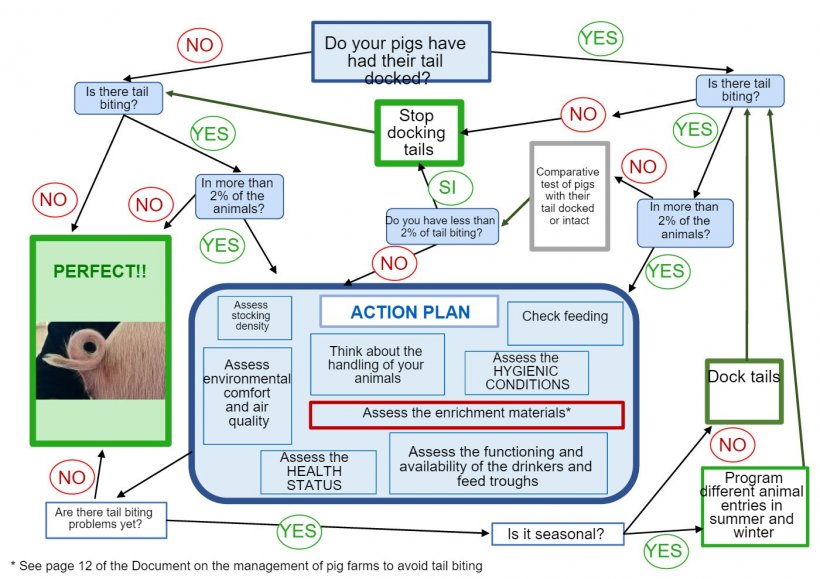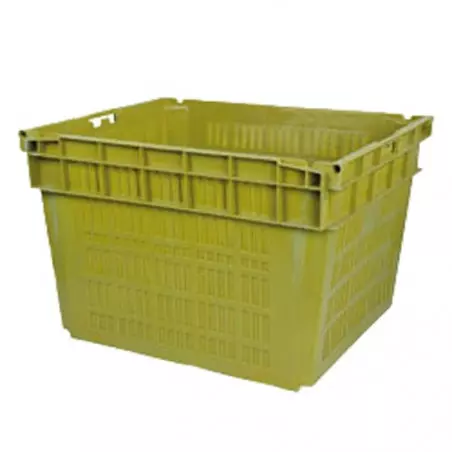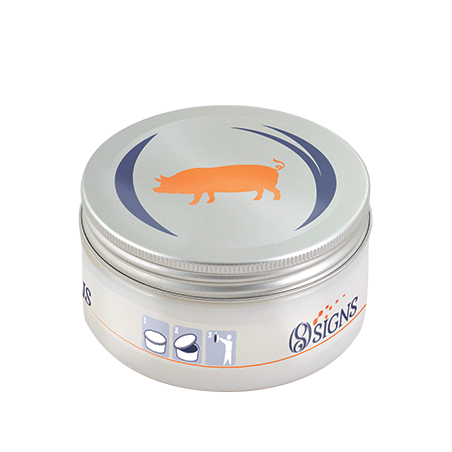One of the aspects on which more emphasis has been placed in the last years regarding pig welfare has been tail docking and its direct correlation with tail biting. The current situation is that tail docking is not forbidden, but routine tail docking must be avoided. The starting point, widespread at a global level, is that tail docking has been the technique used to avoid tail biting. With tail docking, the onset of tail biting in growing and fattening animals has not only been prevented, but it has also minimised the impact in case of outbreaks.
Whereupon the EU legislation, every EU country, except Sweden and Finland where tail docking has been strictly prohibited, has had to present an action plan to DG Santé who is responsible for verifying that it is in line with the objectives set. Similarly, the HFAA (Health and Food Audits and Analysis) is the body responsible for verifying compliance with these action plans.

Apart from the legislation of the EU, there is no other country that has legislated in terms of limiting tail docking, according to the information we have, and either we are not aware of any private initiatives in this area.
Considering the welfare legislation, the focus on the problem must be changed to try to avoid tail biting in pigs through means other than tail docking.
The great question is: How can I stop routine tail docking?
The regulations tell that it shall only be carried out “where there is evidence that injuries to other pigs' tails have occurred".
The regulations also tell that before docking tails, other measures must be implemented to prevent tail biting. This is why it reads: “Before executing tail docking, measures shall be implemented to avoid tail biting and other bad habits bearing in mind the environmental conditions and the stocking density. Due to this, the environmental conditions or the management systems shall be changed if they are inappropriate.”
Result: The conditions under which the animals are raised must be changed in order to define if under these 'new conditions' it is possible to produce or not pigs with their tails intact.
Faced with this situation, we find two challenges:
- The individuality on each farm of the presence or not of tail biting and its degree of severity (we must work farm by farm, and very likely what works on a farm may not work on another one).
- The great number of triggering factors of a tail biting outbreak.
Due to this, in Spain, and with the whole pig sector; the Ministry of Agriculture, Fisheries and Food (MAPA); and the Autonomous Communities facing the challenge, an action plan has been developed to avoid tail biting and to reduce the need for tail docking. This action plan has included a decision-making tree designed by the ANPROGAPOR and adapted by the Spanish Ministry of Agriculture to make things easier for the farmer and the veterinarian regarding the way to proceed when making decisions for stopping tail docking.

Decision-making tree on tail docking produced by ANPROGAPOR
The key aspect for reducing tail biting builds around on trying to control the factors that trigger it, and to this end a thorough risk analysis on each farm must be carried out in order to be able to implement the scheme that controls and prevents the risks of the onset of this problem.
Risk factors:
- Stocking density. The regulations establish minimum densities for each type of animal and/or weight. A lower density will be positive for preventing tail biting, but at the same time, it is one of the measures with a greater economic impact.
- Use of enrichment materials. The lack of enrichment materials or its inappropriateness is another risks. It is important to consider their amount, their placement and their renewal. These objects must be investigable, chewable, manipulable and edible. It would be convenient to have some highly novel materials available used only to stop outbreaks. It is necessary to quantify the correct use of the materials.
- Environmental conditions. Both regarding the thermal comfort and the concentration of gases (some gases are irritants and may affect the animals' behaviour). A correct adjustment of the temperature and an homogeneous air circulation facilitates the prevention of tail biting.
- Animal health. The presence of infectious problems may increase the risk of tail biting, either because the ill and feverish animals have a lower ability to run away or because the discomfort due to the health disorders leads to aggressiveness.
- Feeding. The competition for food, the way to offer it and its composition are key to reduce the stress of the animals and prevent tail biting. Regarding water, its access, arrangements and flow are important to reduce stress and therefore tail biting.
- Individual factors. We currently work with different breeds that may be more or less docile or aggressive, and therefore, the 'nervousness' of some pigs may be a risk factor.
- Castration. The production of intact males also entails a risk in comparison with that of castrated males, because the first ones have a more active behaviour.
- Management: The size of the group (very small or very large) is a risk factor, as well as an inappropriate management with the mixing of animals that modify a known social environment.
- Others. Unfortunately, in terms of tail biting we may find other risk factors that may affect their emergence: factors so difficult to control and prevent such as atmospheric pressure, seasonal changes, the difference in temperatures between night and day...
In summary, it is not easy to stop tail biting on a pig farm and have a certain degree of success. But paths are made by walking, and measures must be taken and the risk factors must be reduced to stabilise the pigs' behaviour thus avoiding tail biting and other vices that are not desirable for the farmer nor the technicians in charge. It is expected that in the next European Commission this will also be a critical subject, so the pressure will be kept at all levels, including the gathering of information on the degree of the problem at the abattoirs.

Every farm that cannot stop tail docking in spite of the improvements implemented shall provide graphic and documentary proof, that it is assessing and solving the risk factors so tail docking does not become a routine procedure.







